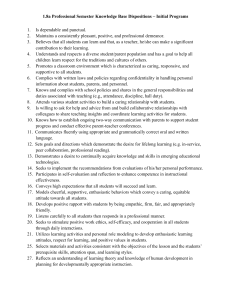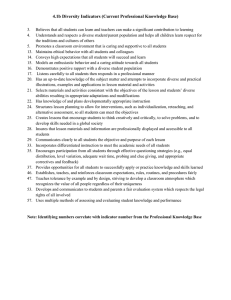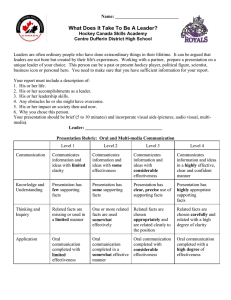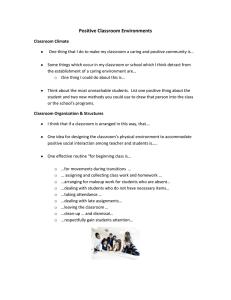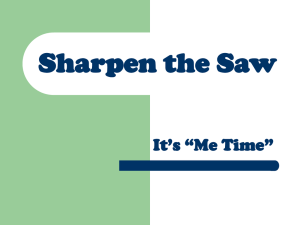Diversity Indicators (Previous Professional Knowledge Base)
advertisement
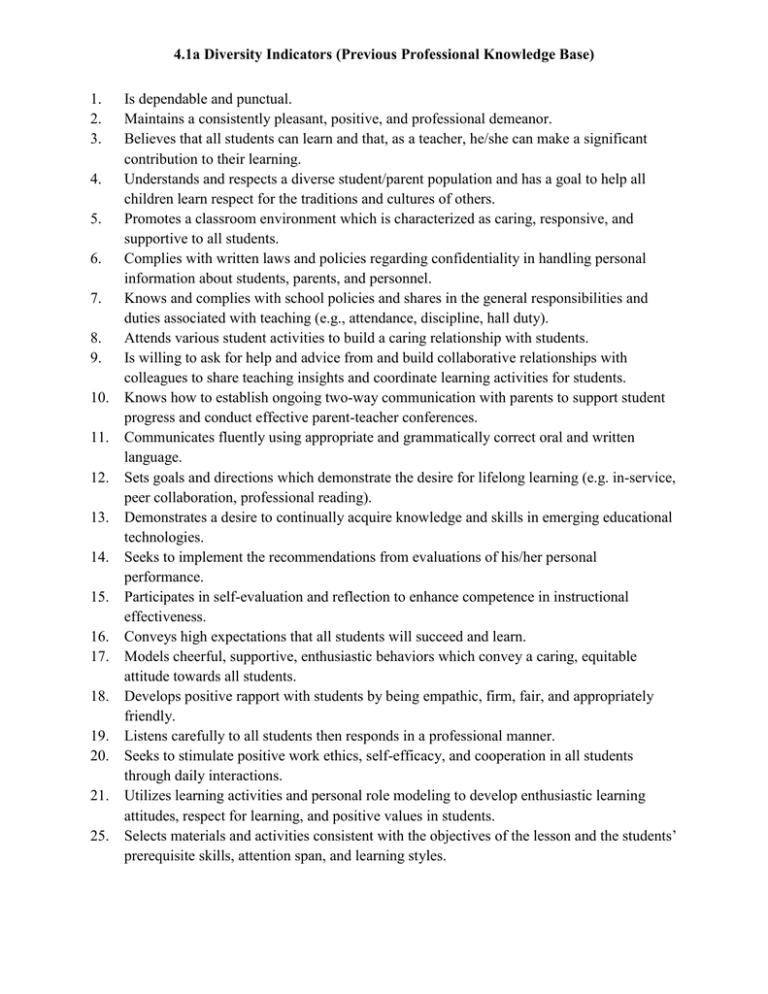
4.1a Diversity Indicators (Previous Professional Knowledge Base) 1. 2. 3. 4. 5. 6. 7. 8. 9. 10. 11. 12. 13. 14. 15. 16. 17. 18. 19. 20. 21. 25. Is dependable and punctual. Maintains a consistently pleasant, positive, and professional demeanor. Believes that all students can learn and that, as a teacher, he/she can make a significant contribution to their learning. Understands and respects a diverse student/parent population and has a goal to help all children learn respect for the traditions and cultures of others. Promotes a classroom environment which is characterized as caring, responsive, and supportive to all students. Complies with written laws and policies regarding confidentiality in handling personal information about students, parents, and personnel. Knows and complies with school policies and shares in the general responsibilities and duties associated with teaching (e.g., attendance, discipline, hall duty). Attends various student activities to build a caring relationship with students. Is willing to ask for help and advice from and build collaborative relationships with colleagues to share teaching insights and coordinate learning activities for students. Knows how to establish ongoing two-way communication with parents to support student progress and conduct effective parent-teacher conferences. Communicates fluently using appropriate and grammatically correct oral and written language. Sets goals and directions which demonstrate the desire for lifelong learning (e.g. in-service, peer collaboration, professional reading). Demonstrates a desire to continually acquire knowledge and skills in emerging educational technologies. Seeks to implement the recommendations from evaluations of his/her personal performance. Participates in self-evaluation and reflection to enhance competence in instructional effectiveness. Conveys high expectations that all students will succeed and learn. Models cheerful, supportive, enthusiastic behaviors which convey a caring, equitable attitude towards all students. Develops positive rapport with students by being empathic, firm, fair, and appropriately friendly. Listens carefully to all students then responds in a professional manner. Seeks to stimulate positive work ethics, self-efficacy, and cooperation in all students through daily interactions. Utilizes learning activities and personal role modeling to develop enthusiastic learning attitudes, respect for learning, and positive values in students. Selects materials and activities consistent with the objectives of the lesson and the students’ prerequisite skills, attention span, and learning styles. 4.1a Diversity Indicators (Previous Professional Knowledge Base) 27. 28. 29. 31. 32. 34. 36. 37. 39. 40. 52. 55. 61. 65. 66. Reflects an understanding of learning theory and knowledge of human development in planning for developmentally appropriate instruction. Structures lesson planning to allow for individualization, reteaching, and alternative assessment so all students could meet the objectives. Conducts class with poise, confidence, and enthusiasm. Insures that lesson materials and information are professionally displayed and accessible to all students. Communicates clearly to all students the objective and purpose of each lesson. Makes the lesson relevant and meaningful for all students by relating it to real world situations. Uses suitable teaching strategies to accommodate learning styles. Incorporates individualized strategies for students with special needs (e.g., English as a second language, learning disabled, behavioral disordered). Encourages participation from all students through effective questioning strategies (e.g., equal distribution, level variation, adequate wait time, probing and clue giving, and appropriate correctives and feedback). Provides opportunities for all students to successfully apply or practice knowledge and skills learned. Teaches tolerance by example and by design, striving to develop a classroom atmosphere which recognizes the value of all people regardless of their uniqueness. Establishes, teaches, and reinforces classroom expectations, rules, routines, and procedures fairly and with an awareness of cultural attitudes and mores. Develops and communicates to students and parents a fair evaluation system which respects the legal rights of all involved. Makes changes in instruction based on feedback from multiple classroom assessment sources. Uses multiple methods of assessing and evaluating student performance. Note: Identifying numbers correlate with indicator number from the Professional Knowledge Base
